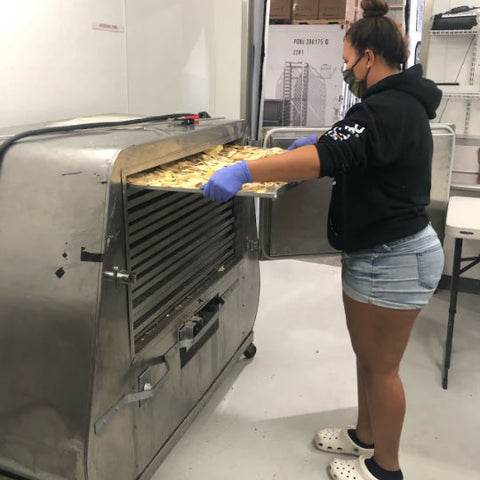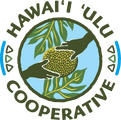Breadfruit Flour Production: How-To Video & Flowchart
Watch the short video above to learn from the experts (our production staff!) all about how ʻulu flour is made – from farmer harvest to washing, cutting, drying, milling and packaging!
The Hawaiʻi ʻUlu Cooperative first started producing breadfruit flour in partnership with farmer-member Roberta Jaques, who founded the Hawaiian ʻUlu Company in 2011. In 2020, we began working to scale ʻulu flour production with our friends at Voyaging Foods and the Hawai'i Farmers Union United.
Given Hawai‘i's current dependence on imported staples—including virtually 100% of our flours—drying and milling ʻulu offers a promising way to increase food security while decreasing food waste.
It's also worth noting that breadfruit turns into an excellent gluten-free flour with many uses and health benefits.
Download ‘Ulu Flour Production: A Visual Flowchart (PDF)
Here is how breadfruit flour is made:
Step 1: Receiving
Fresh ‘ulu is delivered at the starchy, firm maturity stage and without disease or damage by approved suppliers. Post-harvest handling and delivery methods follow Good Agricultural Practices (GAPs).

Step 2: Storage
Fresh ‘ulu is stored in a cool, dry room held between 41 and 55°F. This helps to slow fruit ripening and keep it firm without causing chill damage, which can discolor the flesh.

Step 3: Sorting, washing, and sanitizing*

Step 4: Quartering

Step 5: Slicing / Shredding

Step 6: Drying*


Step 7: Milling

Step 8: Packaging

Step 9: Storage

Step 10: Distribution

*Denotes a critical control point (CCP), a step in the food production process where preventative measures can be applied to prevent, reduce, or eliminate a food safety hazard, such as bacterial growth.
Thanks to support from the Atherton Family Foundation, we have been able to scale our flour operation and have learned A TON in the process! As a result, ‘ulu flour is now more accessible than it was before: you can find 1 lb. bags at several natural food stores throughout the islands and bulk bags are available on our online store.




2 comments
Very grateful to read and know the processing of breadfruit. I love BF very much.
Malo
Good day, I have developed a pasta from breadfruit and am excited about it. Thanks for sharing! Would love to visit your operation.